一、安装nginx前准备
1、安装依赖
修改rpm参数,设置为安装自动下载软件包
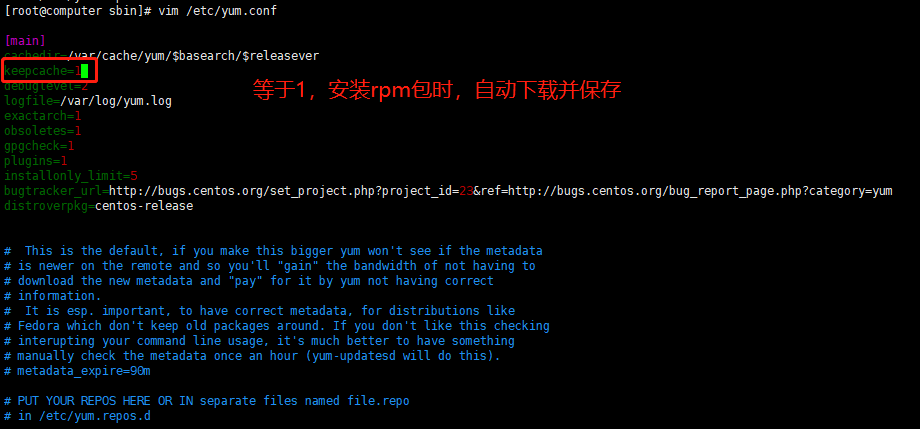
2、安装依赖
yum install gcc openssl openssl-devel pcre pcre-devel zlib zlib-devel -y
3、打包所需要的依赖,下次无网备用

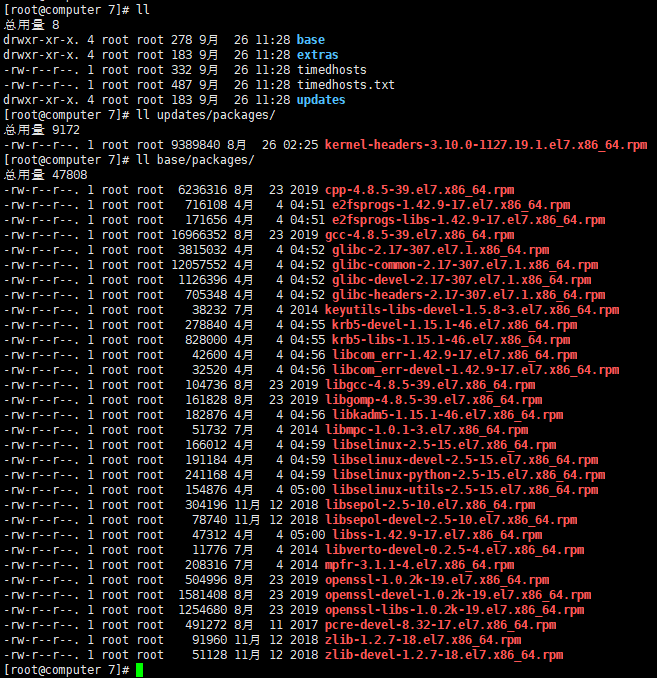
安装顺序:
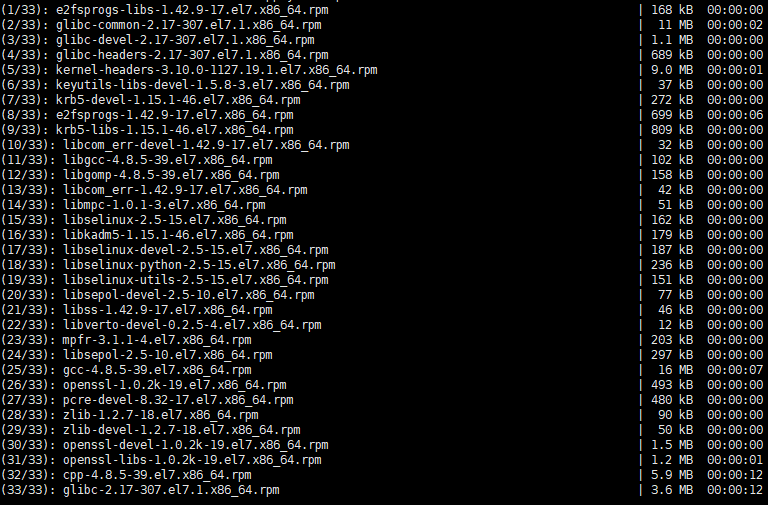
二、开始安装
1、进入安装目录,预编译
[root@computer nginx-1.14.2]# ./configure --prefix=/usr/local/nginx
生产环境中安装

2、make、make install
[root@computer nginx-1.14.2]# make [root@computer nginx-1.14.2]# make install
3、进入安装目录,conf配置文件,logs日志文件,sbin下是启动文件
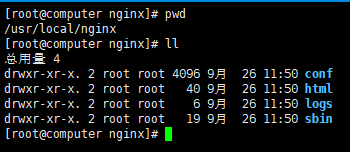
4、普通启动
[root@computer nginx]# cd sbin/
[root@computer sbin]# ./nginx
5、用配置文件启动
[root@computer sbin]# ./nginx -c /usr/local/nginx/conf/nginx.conf
[root@computer sbin]# /usr/local/nginx/sbin/nginx -c /usr/local/nginx/conf/nginx.conf 绝对路径
6、正常关闭nginx
[root@computer sbin]# kill -QUIT 16630(主进程id)

7、快速关闭
[root@computer sbin]# kill -TERM 16637(主进程id)

8、重启nginx,重新加载配置文件
[root@computer sbin]# ./nginx -s reload
9、检查配置文件
[root@computer sbin]# /usr/local/nginx/sbin/nginx -c /usr/local/nginx/conf/nginx.conf -t nginx: the configuration file /usr/local/nginx/conf/nginx.conf syntax is ok nginx: configuration file /usr/local/nginx/conf/nginx.conf test is successful
9、查看版本
[root@computer sbin]# /usr/local/nginx/sbin/nginx -V nginx version: nginx/1.14.2 built by gcc 4.8.5 20150623 (Red Hat 4.8.5-39) (GCC) configure arguments: --prefix=/usr/local/nginx [root@computer sbin]# /usr/local/nginx/sbin/nginx -v nginx version: nginx/1.14.2

10、去除空格和#号

三、配置文件nginx.conf详解
#user nobody; #开启进程数 <=CPU数 worker_processes 1; #错误日志保存位置 #error_log logs/error.log; #error_log logs/error.log notice; #error_log logs/error.log info; #进程号保存文件 #pid logs/nginx.pid; #每个进程最大连接数(最大连接=连接数x进程数)每个worker允许同时产生多少个链接,默认1024 events { worker_connections 1024; } http { #文件扩展名与文件类型映射表 include mime.types; #默认文件类型 default_type application/octet-stream; #日志文件输出格式 这个位置相于全局设置 log_format main '$remote_addr - $remote_user [$time_local] "$request" ' '$status $body_bytes_sent "$http_referer" ' '"$http_user_agent" "$http_x_forwarded_for"'; #请求日志保存位置 #access_log logs/access.log main; #打开发送文件 sendfile on; #tcp_nopush on; #keepalive_timeout 0; #连接超时时间 keepalive_timeout 65; #打开gzip压缩 #gzip on; #设定请求缓冲 #client_header_buffer_size 1k; #large_client_header_buffers 4 4k; #设定负载均衡的服务器列表 #upstream myproject { #weigth参数表示权值,权值越高被分配到的几率越大 #max_fails 当有#max_fails个请求失败,就表示后端的服务器不可用,默认为1,将其设置为0可以关闭检查 #fail_timeout 在以后的#fail_timeout时间内nginx不会再把请求发往已检查出标记为不可用的服务器 #} #webapp #upstream myapp { # server 192.168.1.171:8080 weight=1 max_fails=2 fail_timeout=30s; # server 192.168.1.172:8080 weight=1 max_fails=2 fail_timeout=30s; #} #配置虚拟主机,基于域名、ip和端口 server { #监听端口 listen 80; #监听域名 server_name localhost; #charset koi8-r; #nginx访问日志放在logs/host.access.log下,并且使用main格式(还可以自定义格式) #access_log logs/host.access.log main; #返回的相应文件地址 location / { #设置客户端真实ip地址 #proxy_set_header X-real-ip $remote_addr; #负载均衡反向代理 #proxy_pass http://myapp; #返回根路径地址(相对路径:相对于/usr/local/nginx/) root html; #默认访问文件 index index.html index.htm; } #配置反向代理tomcat服务器:拦截.jsp结尾的请求转向到tomcat #location ~ .jsp$ { # proxy_pass http://192.168.1.171:8080; #} #error_page 404 /404.html; # redirect server error pages to the static page /50x.html # #错误页面及其返回地址 error_page 500 502 503 504 /50x.html; location = /50x.html { root html; } # proxy the PHP scripts to Apache listening on 127.0.0.1:80 # #location ~ .php$ { # proxy_pass http://127.0.0.1; #} # pass the PHP scripts to FastCGI server listening on 127.0.0.1:9000 # #location ~ .php$ { # root html; # fastcgi_pass 127.0.0.1:9000; # fastcgi_index index.php; # fastcgi_param SCRIPT_FILENAME /scripts$fastcgi_script_name; # include fastcgi_params; #} # deny access to .htaccess files, if Apache's document root # concurs with nginx's one # #location ~ /.ht { # deny all; #} } #虚拟主机配置: server { listen 1234; server_name bhz.com; location / { #正则表达式匹配uri方式:在/usr/local/nginx/bhz.com下 建立一个test123.html 然后使用正则匹配 #location ~ test { ## 重写语法:if return (条件 = ~ ~*) #if ($remote_addr = 192.168.1.200) { # return 401; #} #if ($http_user_agent ~* firefox) { # rewrite ^.*$ /firefox.html; # break; #} root bhz.com; index index.html; } #location /goods { # rewrite "goods-(d{1,5}).html" /goods-ctrl.html; # root bhz.com; # index index.html; #} #配置访问日志 access_log logs/bhz.com.access.log main; } # another virtual host using mix of IP-, name-, and port-based configuration # #server { # listen 8000; # listen somename:8080; # server_name somename alias another.alias; # location / { # root html; # index index.html index.htm; # } #} # HTTPS server # #server { # listen 443 ssl; # server_name localhost; # ssl_certificate cert.pem; # ssl_certificate_key cert.key; # ssl_session_cache shared:SSL:1m; # ssl_session_timeout 5m; # ssl_ciphers HIGH:!aNULL:!MD5; # ssl_prefer_server_ciphers on; # location / { # root html; # index index.html index.htm; # } #} }
四、配置文件讲解
1、基本配置文件

2、配置worker进程,上线是65535,nginx支持的总连接数=worker_connections*workerprocesses

3、http服务器
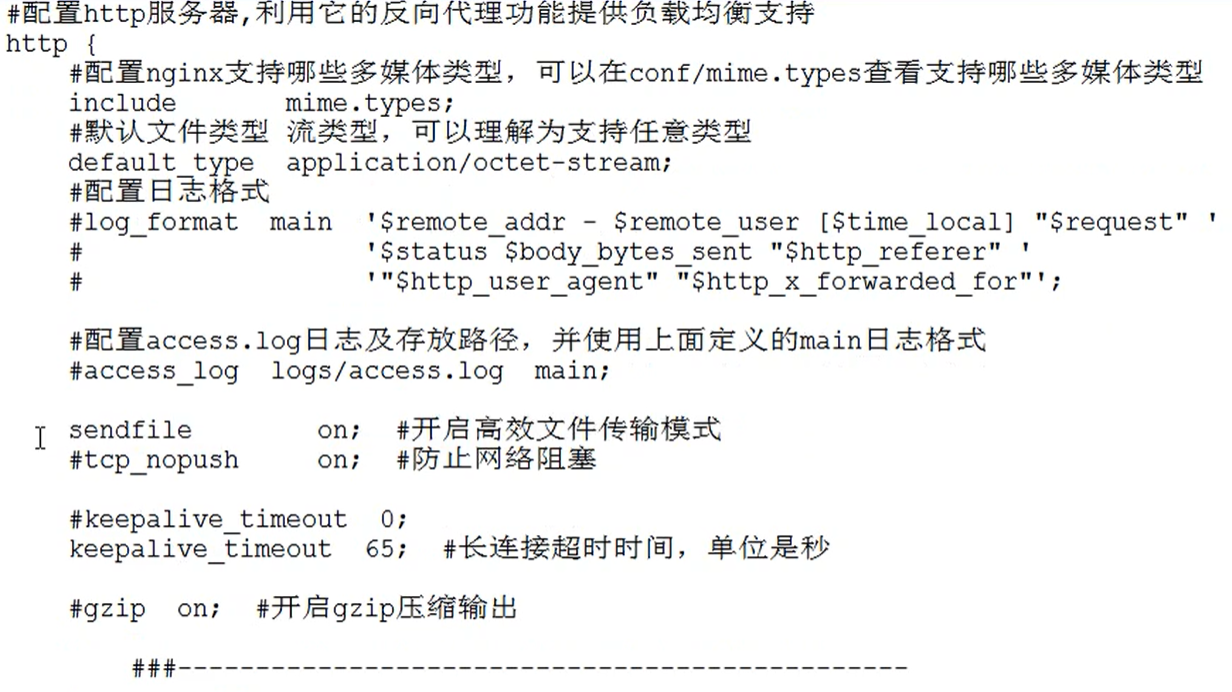
4、配置server
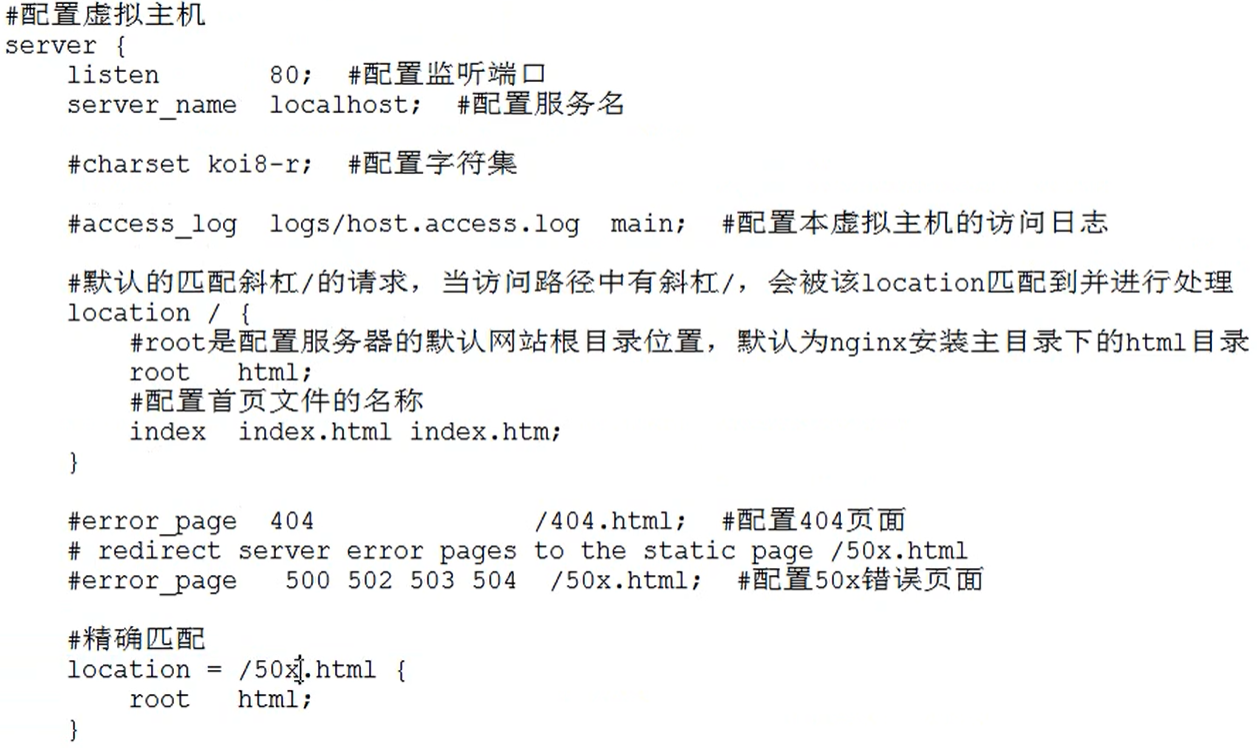
四、负载均衡
查看官网帮助文档
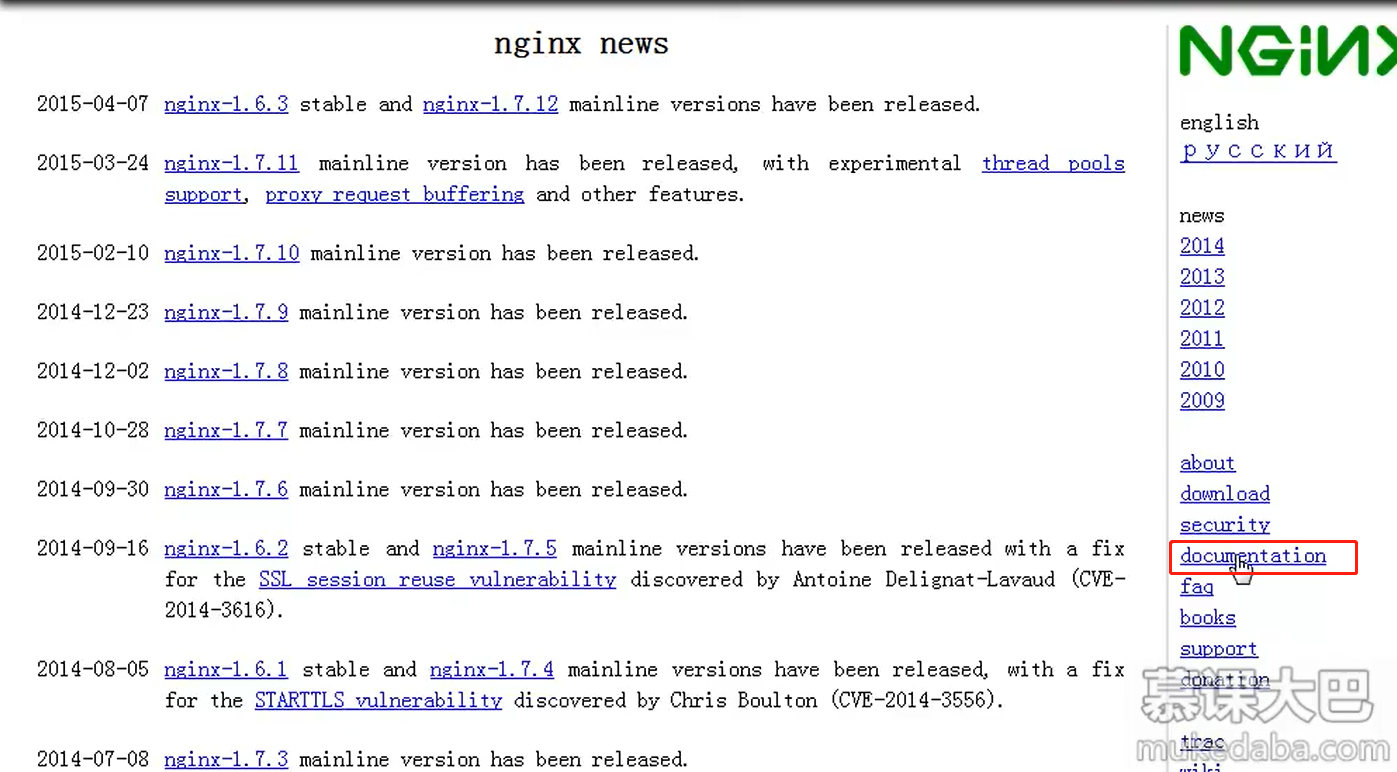


1、参数
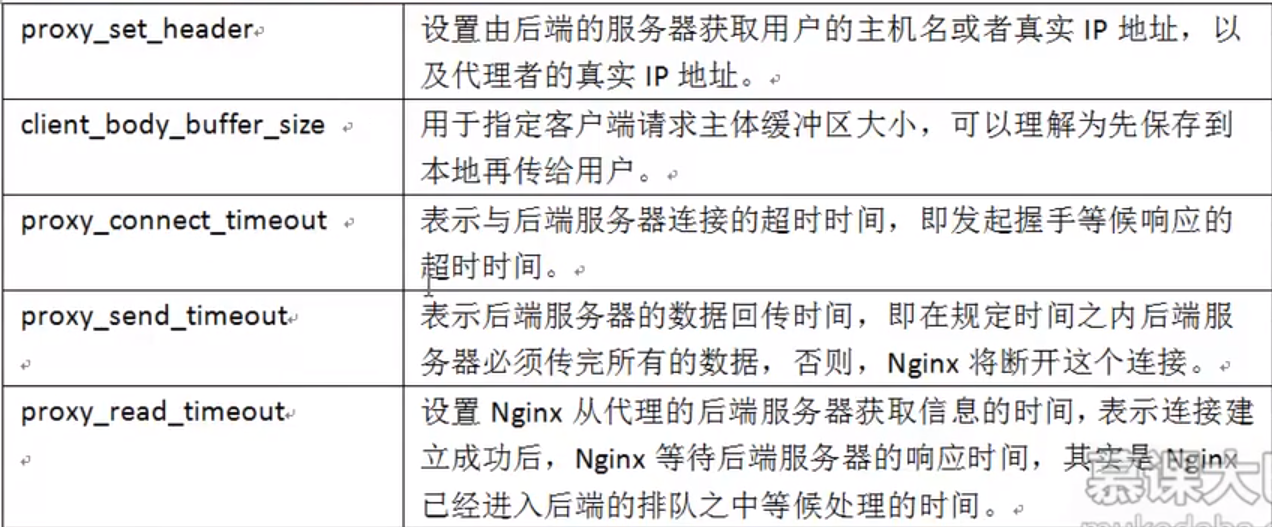

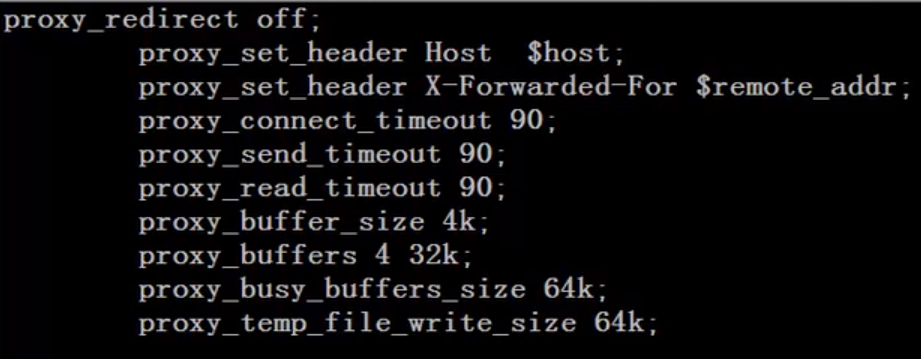
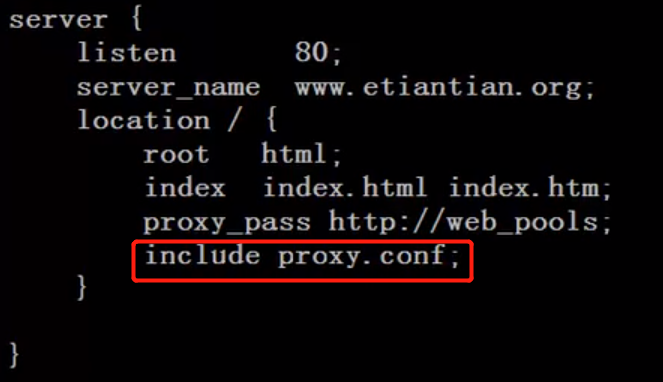
2、proxy_set_header参数


3、配置日志记录客户端IP地址

配置apache日志收集
![]()

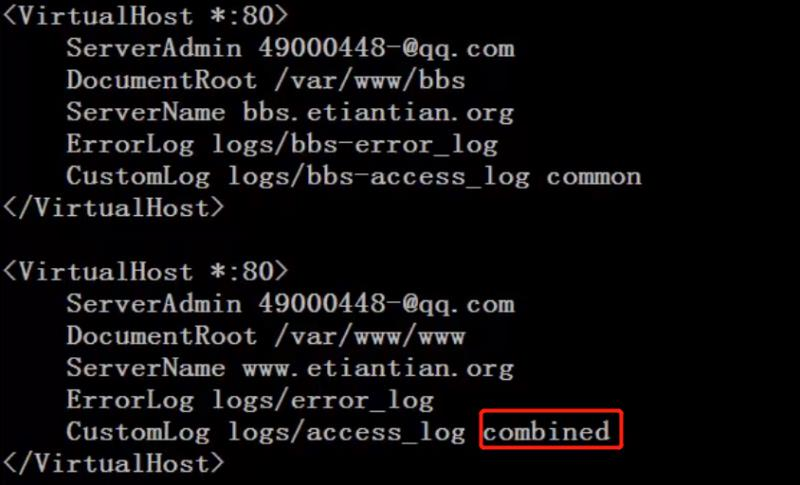
nginx配置:

4、负载均衡配置
1)轮询策略
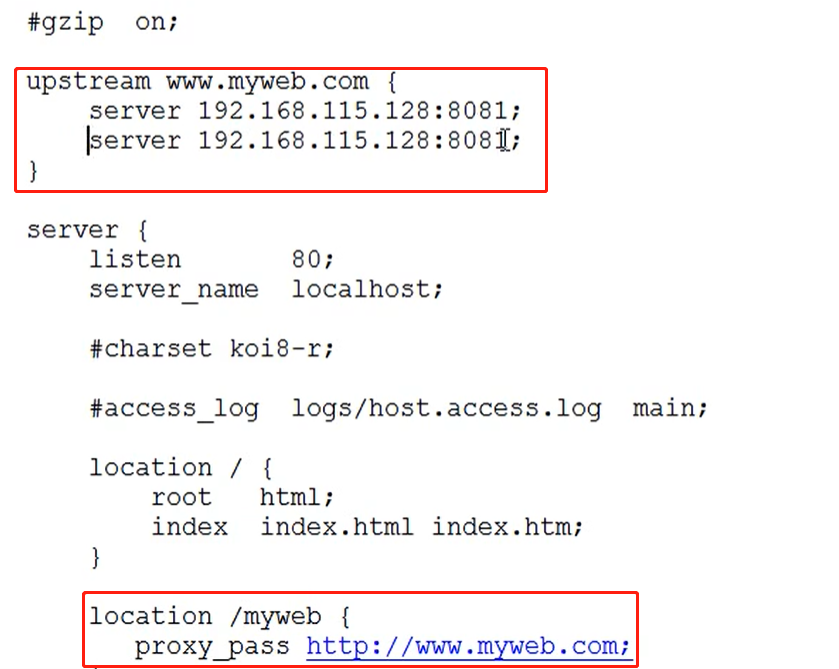
2)权重策略

3)最小连接数

4)hash(这种方式不会丢失session)



5)url_hash

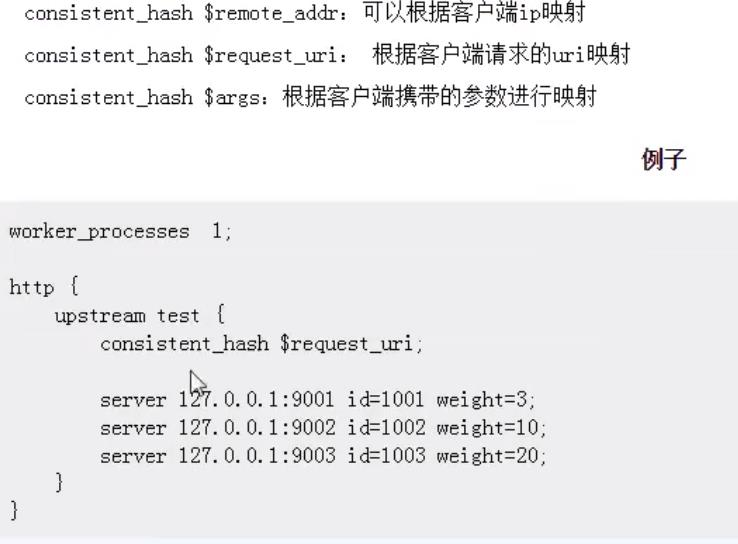
5、max_fails参数

6、fail_timeout参数

7、两个参数配合案例


五、热更新
1、backup实现图,关闭主服务器,更新备份服务器

2、启动主服务器

六、静态代理
1、静态代理方式
1)目录过滤

2)后缀名过滤

2、目录对应

七、动静分离
1、概念优势

2、架构图


3、实施步骤
1)部署两个tomcat,用作动态资源
2)部署两个nginx,用作静态资源
3) nginx负载均衡配置
动态资源负载
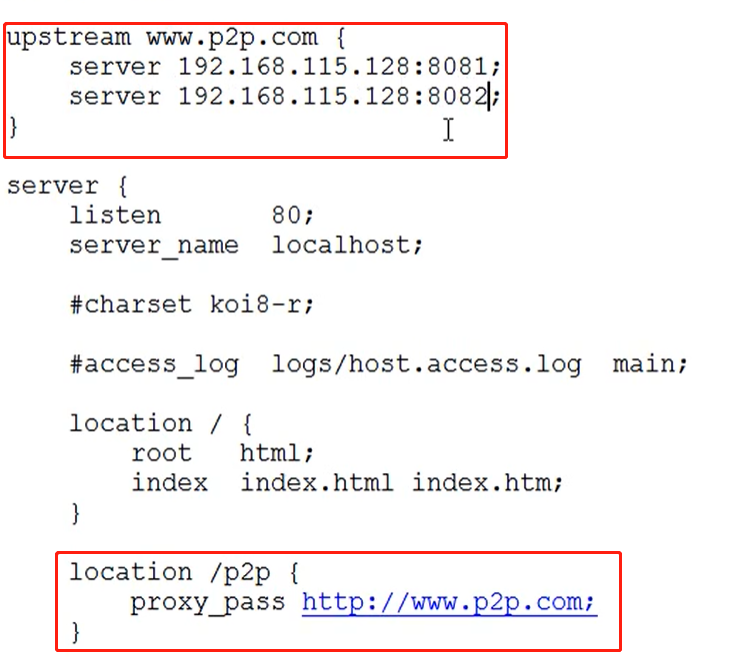
解决session丢失问题

静态资源负载,拦截静态资源文件夹
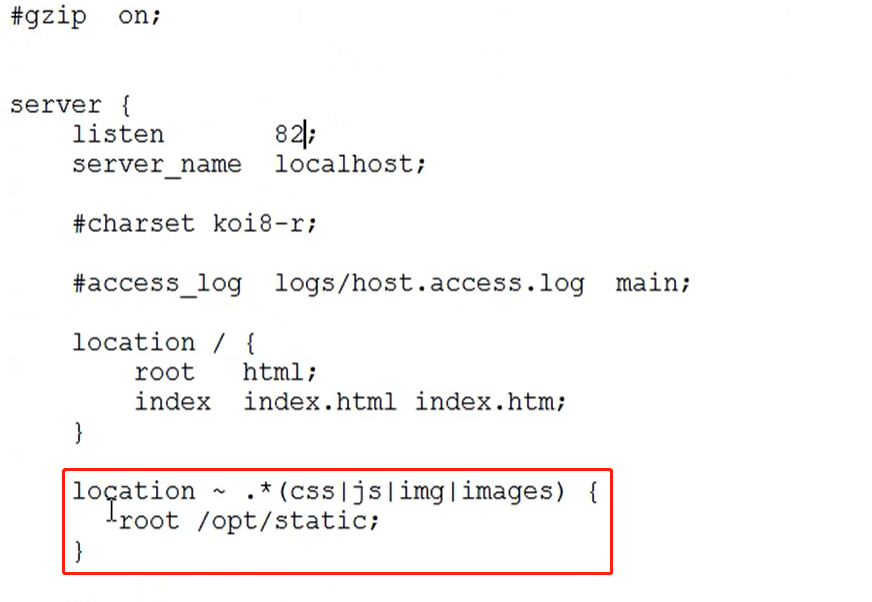
负载均衡设置


4、案例二

生产建议权限控制:

1)配置文件
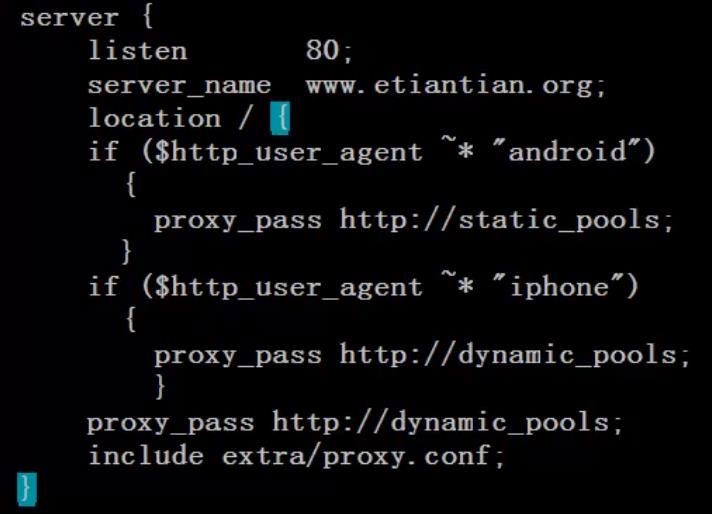
2)配置记录浏览器的型号

八、虚拟主机
1、基于域名的虚拟主机

2、架构图

3、具体配置
